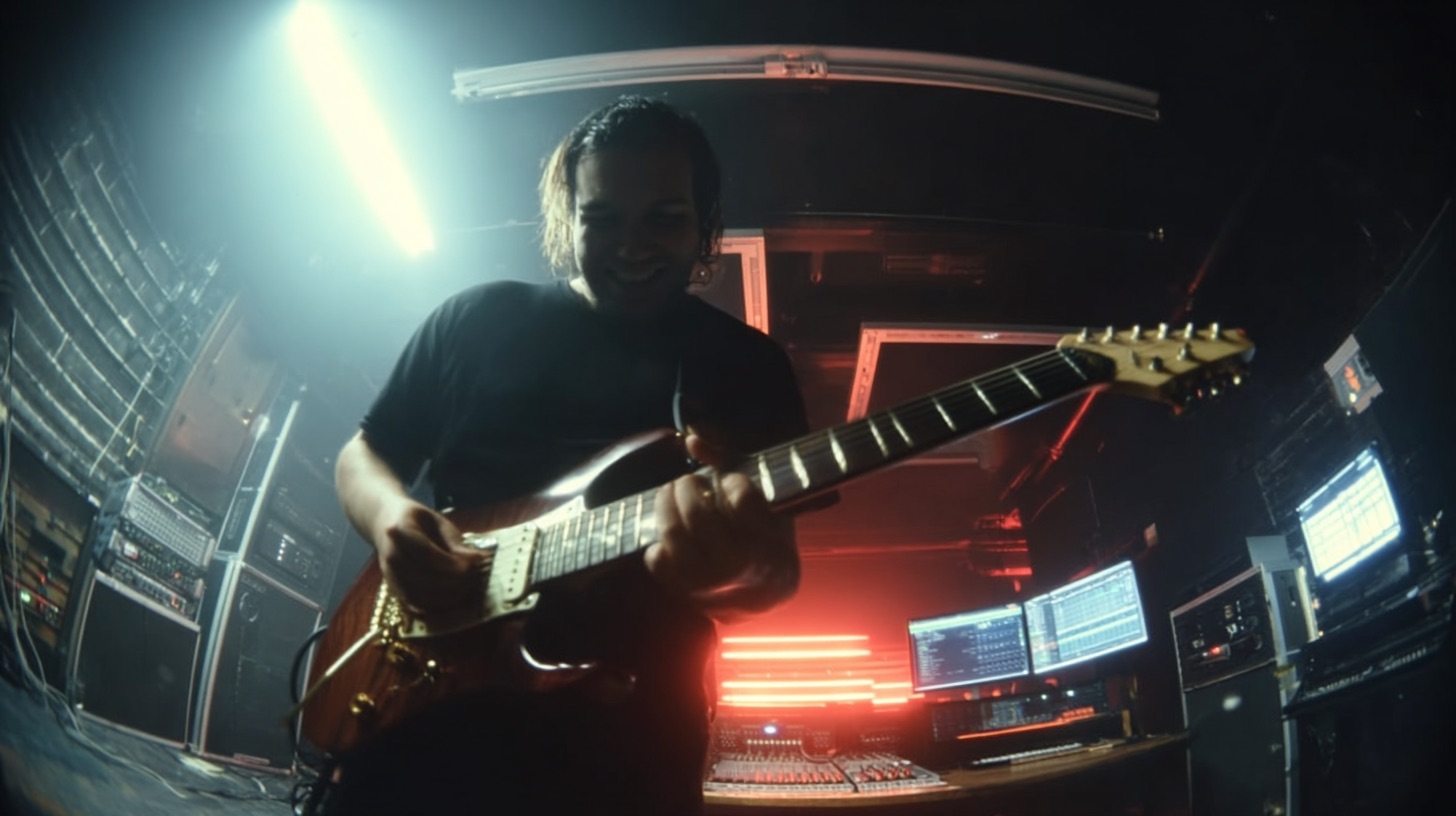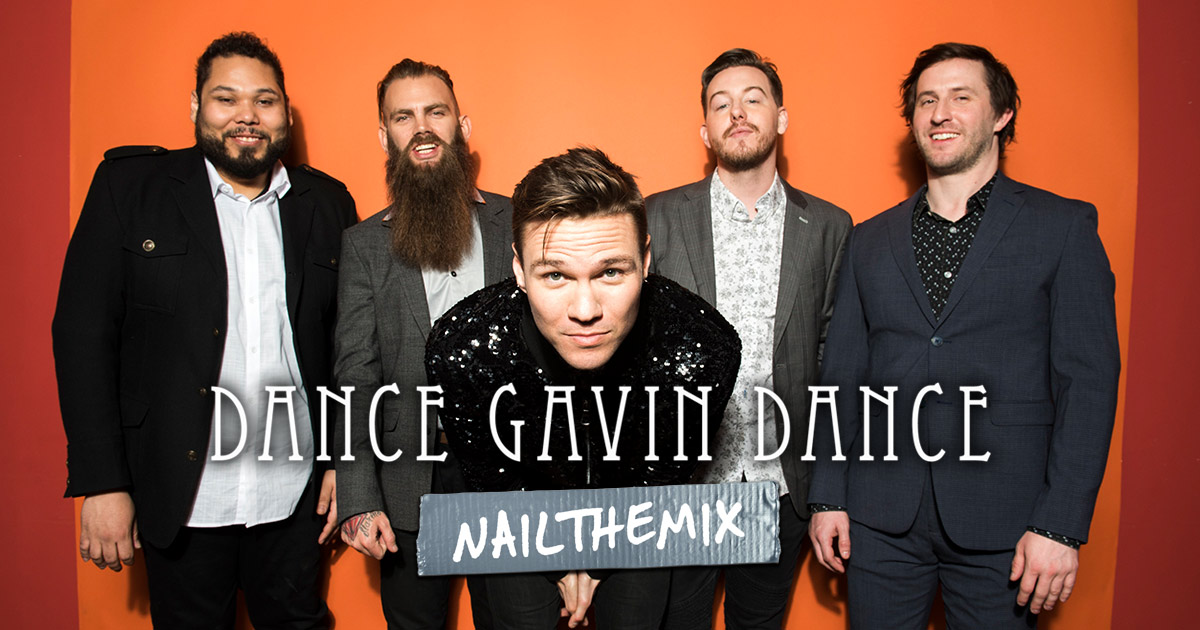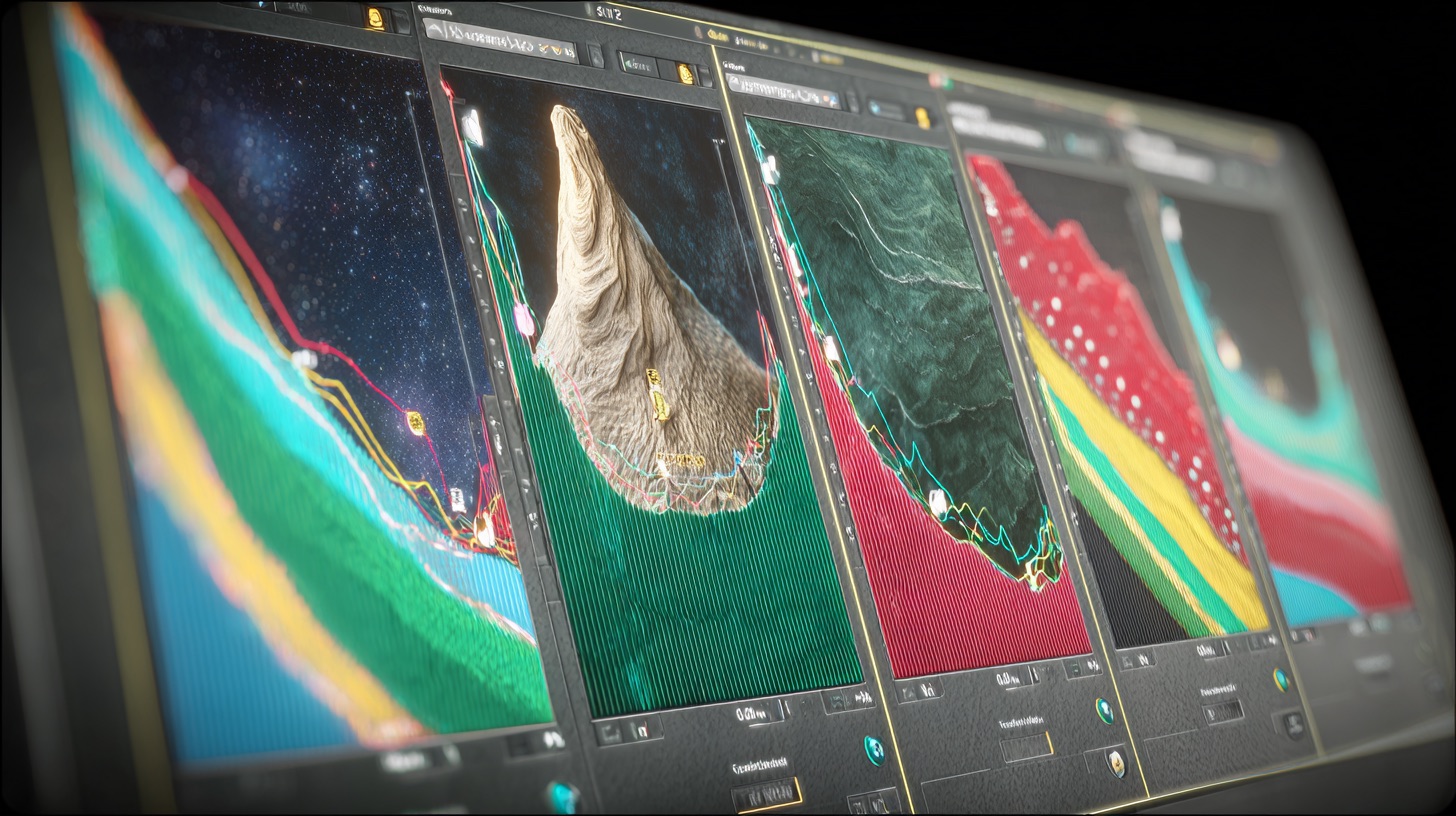
Modern Metal Guitar Rig: Essential Tools & Techniques
Nail The Mix Staff
Alright, let's talk about the modern metal guitar rig. If you're aiming for those face-melting, super-polished tones that define today's metal landscape, you know your guitar setup is ground zero. Gone are the days when a dodgy demo from a local band would cut it. Now, even unsigned acts are dropping releases with production quality that rivals major label behemoths. The bar is high, folks, but the good news? The tools to clear it are more accessible than ever.
This isn't just about what amp head you're plugging into anymore. Your "guitar rig" in 2024 encompasses everything from your DI signal to the intricate chain of plugins that sculpt your sound into a weapon of mass destruction. We're talking amp sims, impulse responses, strategic EQs, and knowing how to make it all work for those low-tuned, high-gain assaults.
The Evolution: From Physical Stacks to Digital Powerhouses
Remember when crafting a killer metal tone meant lugging a Peavey 5150 or a Mesa Boogie Dual Rectifier and a 4×12 cab to every session? Those amps are legendary for a reason, and they still absolutely rip. But the game has changed, especially with the demands of modern metal.
The Old Guard: Still Relevant, But With Caveats
Classics like the Peavey 5150/6505, Mesa Boogie Rectifier series, and the venerable Marshall JCM800 (often boosted) laid the foundation. Paired with cabs like a Mesa Oversized or an Orange PPC412 loaded with Celestion Vintage 30s, you had the recipe for aggression.
However, recording real amps perfectly requires a good room, multiple mics (think SM57s, MD421s, maybe a Royer R-121), and the know-how to blend them while battling phase issues and volume constraints. For the modern producer, especially those working in home studios, this isn't always practical or efficient.
The Digital Revolution: Amp Sims Ascendant
This is where the digital guitar rig truly shines. Amp modeling software has reached a point where the line between a well-dialed sim and a miked-up amp is incredibly blurry, if not invisible in a dense mix.
Plugins from companies like Neural DSP (their Archetype series: Gojira, Nolly, Plini, Petrucci are industry standards), STL Tones (Tonality suites by Will Putney, Howard Benson), Positive Grid (BIAS FX/Amp), and, of course, Native Instruments Guitar Rig, have democratized access to an arsenal of tones.
Why the shift?
- Consistency & Recall: Dial in a sound, save it, and it's identical every time. No more worrying about mic placement drift or tube variations.
- Cost-Effectiveness: Access dozens of virtual amps, cabs, and effects for the price of a single high-end pedal.
- Flexibility for Modern Metal's Demands: Modern metal often incorporates diverse influences, from pop to hip-hop (think Polyphia or Falling in Reverse). A versatile digital guitar rig lets you pivot tonally on a dime. Need a pristine clean, a djenty chug, and an ambient lead in the same song? No problem.
- Tackling Low Tunings: This is a big one. Bands are tuning lower than ever (hello, 8 and 9-string guitars!). Amp sims are often designed with this in mind, offering clarity and tightness where some physical amps might turn to mud without serious tweaking.
Building Your Ultimate Digital Guitar Rig for Modern Metal
So, how do you construct a digital guitar rig that slays? It's about a chain of carefully selected components.
Core Tones: Amp Sims & Impulse Responses (IRs)
Your amp sim is the heart. We mentioned Neural DSP and STL, but Native Instruments Guitar Rig is a comprehensive suite that offers a massive range of tools. Its amp models like the "Van51" (a clear nod to the 5150) or the "Gratifier" (Recto-style) are excellent starting points for heavy tones. Guitar Rig’s "Control Room Pro" or "Matched Cabinets" offer sophisticated cab and mic blending, but the real game-changer for many is using third-party Impulse Responses.
Impulse Responses (IRs) are sonic snapshots of a speaker cabinet and microphone combination. Using high-quality IRs from providers like OwnHammer, Celestion (yes, they make their own official IRs!), York Audio, or ML Sound Lab can elevate even a good amp sim to greatness. Mix and match! Try a "Van51" head from Guitar Rig with a Mesa V30 IR from OwnHammer.
Pre-Gain Sculpting: The Secret to Tightness
Before your signal even hits the "amp," you need to control it. This is crucial for modern metal's percussive, articulate attack.
- Noise Gate: Essential for cutting out hum and hiss between chugs. Many amp sims have built-in gates. Guitar Rig has several, like the "Noise Gate" or "Noise Reduction" components. Plugins like the Fortin ZUUL (or its digital counterparts) are legendary. Set the threshold so it clamps down on silence but opens instantly on your playing.
- The Almighty Tube Screamer (or similar Overdrive): This is less about adding distortion and more about shaping the EQ before the amp. The classic trick: Ibanez TS9/TS808 (or a plugin emulation like Guitar Rig’s "Skreamer", or the TSE 808).
- Typical Settings: Drive: 0-2, Level: 8-10, Tone: 5-8 (to taste).
This tightens the low end, pushes the mids, and helps your palm mutes punch through without flub.
- Typical Settings: Drive: 0-2, Level: 8-10, Tone: 5-8 (to taste).
Post-Amp EQ: Carving Your Space
Once you have your core high-gain tone, EQ is where you make it sit in the mix. Modern metal production demands clarity, and with low tunings and dense arrangements, this is non-negotiable.
- High-Pass Filter (HPF): Cut out unnecessary sub-low rumble. For guitars, this might be anywhere from 80Hz to 150Hz, depending on the tuning and how it interacts with the bass guitar. Listen carefully!
- Low-Pass Filter (LPF): Tame the "fizz" or harsh high-end. This can be anywhere from 7kHz to 12kHz. It cleans up the top end without making the guitars sound dull.
- Surgical Cuts: Find those annoying whistle frequencies or boxy mids with a narrow Q and notch them out. This is where you can really carve your core EQ strategies for mixing modern metal.
- The "Scoop" vs. "Push": While the classic thrash scoop (cutting around 250-500Hz) still has its place, many modern tones benefit from carefully managed mids or even a slight mid-boost in the upper midrange (1-3kHz) for articulation.
Guitar Rig (The Plugin): A Deeper Dive for Metal
Native Instruments Guitar Rig has been around for a while, and it's evolved into a seriously powerful modular effects processor. It’s not just for guitars; people use it on everything. But for metal guitarists and producers, it's a treasure trove.
Key Components for Metal:
- Amps: As mentioned, the "Van51" (Peavey 5150/EVH style) and "Gratifier" (Mesa Rectifier style) are go-tos. The "Citrus" (Orange style) can also get you into some great sludgy or rockier metal territories.
- Cabs & Mics: The "Control Room Pro" module lets you blend up to 8 mics on a single cab, or load your own IRs. The "Matched Cabinet Pro" offers specific cab/mic pairings designed for each amp model.
- Effects:
- Distortion/Overdrives: The "Skreamer" is your TS808. The "Demon" (Distortion) or "Fuzz" can be used for more extreme sounds or layered subtly.
- EQs: Various studio-style EQs like the "Solid EQ" (SSL style) or graphic EQs are perfect for surgical tone shaping.
- Dynamics: Besides gates, compressors like the "Solid Bus Comp" can be used on a guitar bus, or more subtly on individual tracks.
- Modulation & Time-Based Effects: For leads, cleans, or experimental textures, Guitar Rig has a vast array of chorus, flanger, delay ("Replika" is excellent), and reverb ("RC 24", "RC 48" for classic Lexicon sounds, or "Raum" for modern lushness) units.
Example Modern Metal Chain in Guitar Rig:
- Input Gain/Gate: Start with a "Noise Gate" or "Noise Reduction."
- "Skreamer": Drive 0, Level 10, Tone to taste (around 6-7).
- "Van51" (Red Channel): Gain around 6-7, Bass 4-5, Mid 5-6, Treble 6-7, Presence 6-7. (These are starting points, adjust based on your guitar and tuning!)
- "Control Room Pro" / IR Loader: Load your favorite V30 IR. (e.g., a Mesa 4×12 IR).
- "Solid EQ" / "EQ Parametric":
- HPF @ 100Hz (12 or 24dB/octave slope).
- LPF @ 8-10kHz.
- Dip any harsh "fizz" frequencies (often between 3-6kHz) with a narrow Q.
- Subtle cut around 250-400Hz if mud appears.
- Maybe a gentle wide boost around 1.5-2.5kHz for pick attack if needed.
This kind of guitar rig setup inside a single plugin offers incredible power and routing flexibility. You can split signals, create parallel processing chains, and automate virtually any parameter.
Tackling Modern Metal Challenges
The highly polished, incredibly tight, and often very low-tuned sound of modern metal presents unique challenges that your guitar rig needs to address.
The Low-Tuning Labyrinth
With 7, 8, and even 9-string guitars (or baritones tuned to F# or lower), maintaining clarity is paramount.
- Amp Choice: Sims modeled after amps known for handling low tunings (like the 5150/6505 or some modern high-gain designs like Fortin or Omega) are good starting points.
- IR Selection: Darker IRs might exacerbate mud. Look for IRs with a clear midrange and controlled low-end.
- Aggressive EQ: You'll likely need more aggressive high-passing. The interaction between low-tuned guitars and the bass guitar becomes critical. You might need to carve out distinct frequency slots for each.

100+ Insanely Detailed Mixing Tutorials
We leave absolutely nothing out, showing you every single step
Achieving That "Polished" Sound
This is about control and precision.
- Gain Staging: Don't just dime the gain on everything. Too much gain leads to noise, fizz, and a lack of definition. Often, less gain + a good boost pedal sim + precise EQ = a heavier, clearer tone.
- Multi-Tracking: Modern metal often features quad-tracked rhythm guitars (two distinct performances, panned hard left and right, then doubled). Your digital guitar rig makes this easy to manage consistently.
- Dynamics Control: While you want aggressive guitars, some subtle metal compression secrets beyond just making it loud on a guitar bus can help glue them together and even out the performance, contributing to that polished feel.
Beyond the Tones: Your Guitar Rig in the Mix
Remember, your guitar rig doesn't exist in a vacuum. It needs to work with hyper-polished drums (often sample-replaced or programmed), a thunderous bass, and powerful vocals. The precision musicianship common today means every note needs to be heard.
- DI Quality is King: A clean, strong DI signal is your foundation. Bad DI, bad re-amped tone.
- Performance: No amount of gear or plugins can fix a sloppy performance. The bar for musicianship is incredibly high.
- Guitar Bus Processing: Sending your rhythm guitars to a stereo bus and applying subtle EQ, saturation, or stereo widening can help them feel like a cohesive unit. A touch of console emulation or tape saturation can add character.
Crafting the perfect modern metal guitar rig is an ongoing journey of experimentation. The tools are there, many of them incredibly affordable or even built into your DAW or suites like Guitar Rig. The expectation for professional sound is higher than ever, but so is your ability to achieve it from your own studio.
Want to see how A-list producers build these tones, EQ guitars to sit perfectly, and make them slam in a dense metal mix? At Nail The Mix, we bring in the actual producers behind some of metal's biggest albums. You get the raw multitracks and watch them mix the song from scratch, explaining every plugin, every setting, every decision. It's the fast track to unlocking your sound and mixing modern metal beyond presets. Imagine seeing how your favorite tones are really made. That's what we do.
Get a new set of multi-tracks every month from a world-class artist, a livestream with the producer who mixed it, 100+ tutorials, our exclusive plugins and more
Get Started for $1





